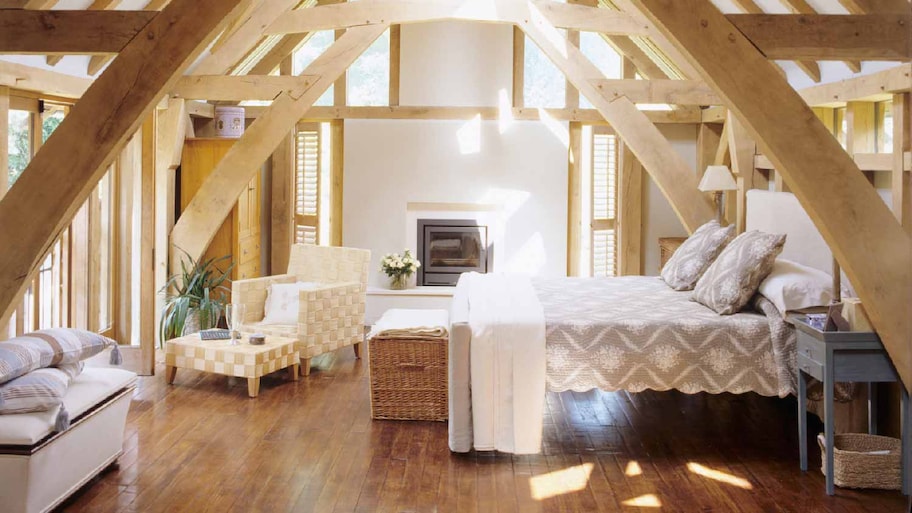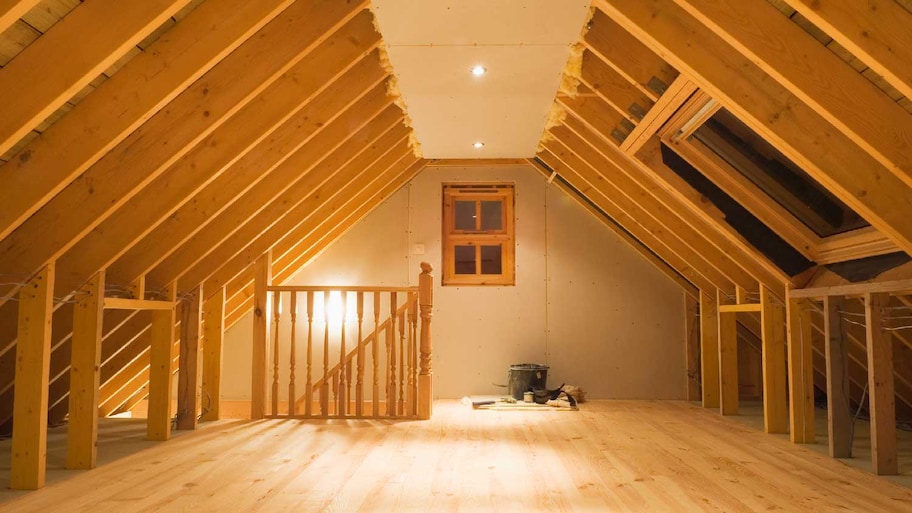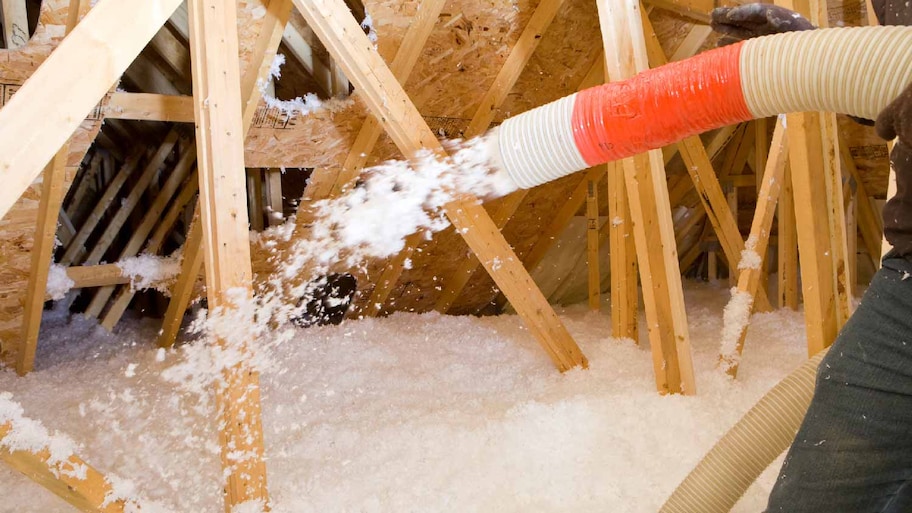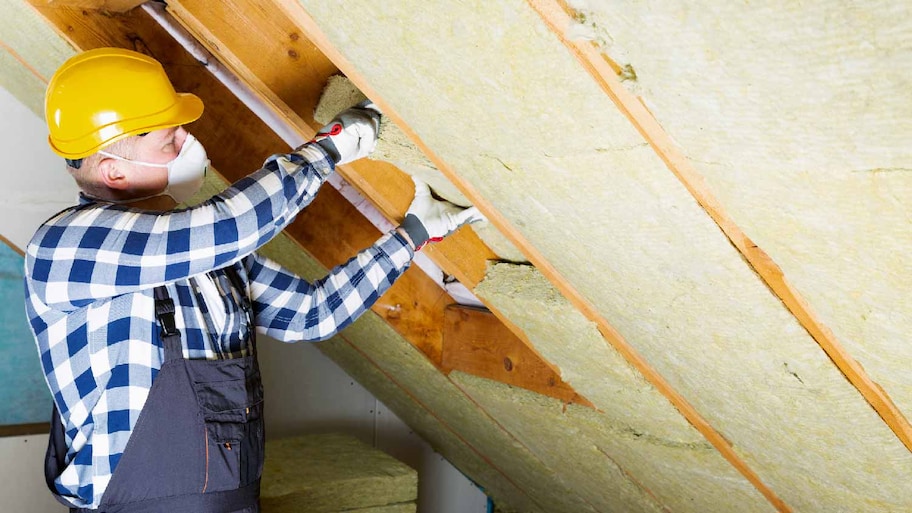How To Insulate Your Attic (And Lower Energy Bills in the Process)
Reach the peak of proper insulation


If you want your home to be cozy and maintain the perfect temperature year-round, it’s imperative that you insulate your attic. While insulation is important throughout your home, don’t forget about the attic, where there are plenty of nooks, crannies, and potential places that could create temperature fluctuations in your home. Learn how to insulate your attic properly so you feel comfortable and keep your energy bills down.
Why Do I Have to Insulate My Attic?
You know how wearing a hat keeps you warm in winter, and shades you from the sun during summer? Insulating your attic works a bit like that but for your home. The insulation reduces the amount of hot or cold air transfer, meaning that it protects your home’s cool air from escaping in summer and its warm air from escaping in winter. Insulation keeps you comfortable in your home and also reduces your energy bills. In addition to helping you save money, attic insulation also:
Helps prevent ice dams: Ice dams can damage your roof’s shingles and shorten your roof’s overall life. If your roof becomes overly warm in winter, as a result of poor insulation, snow on shingles can melt and then re-freeze on your eaves as ice, resulting in ice dams.
Protects your gutters: Without proper insulation, your roof deck will experience more dramatic changes in temperature, causing them to expand and contract more often. This can eventually shift your gutters and loosen your gutter fasteners.
Prolongs your HVAC unit: Your HVAC system will last much longer if it doesn’t have to work as hard to heat and cool your home throughout the year.
How Much Does It Cost to Insulate My Attic?
The cost to insulate an attic ranges between between $1,700 and $2,100, on average. To hire a professional attic insulation contractor, expect to pay between $55 and $85 per hour for labor, plus the cost of materials. Additionally, note that some materials require the use of special machines, such as a blower for blown-in insulation. These machines can cost $30 to $60 to rent, per day.
How to Prep to Insulate an Attic

Before proceeding, perform an energy audit on your home—this step is recommended by the U.S. Department of Energy. You can hire a professional to complete the audit—which will cost between $400 and $500 and includes air thermometer and furnace efficacy checks—or you can perform (a much more superficial) one yourself. To complete the audit yourself, follow these steps:
Make sure the attic door is insulated with weather-stripping
Check for caulking or expanding foam around pipes and ducts
If the attic is already insulated, confirm that the bottom side of any fiberglass batt insulation has an attached paper vapor barrier or polyethylene barrier
You’ll also need to decide what type of insulation you will use. Most DIYers opt for fiberglass batts/rolls, as they are easier to manage. That said, blown-in insulation does a better job at reaching the small nooks and crannies of a space, helping to more completely insulate your attic. Check your local building codes to confirm that the insulation you have selected has the appropriate R-value for your location.
Finally, clear your attic of any items before starting the insulation process.
How to Insulate An Attic

Let’s get into the details of how to complete this essential project. Whether you choose batt and roll or blown-in insulation, there are only a few steps between you and lower energy bills.
Enter Attic
Using a sturdy ladder and wearing protective gear (goggles, gloves, N95 mask, and clothing that covers your arms and legs), enter the attic. Wear a headlamp so you can see where you’re going up there. Have a helper hand you the rest of your tools and supplies.
Caulk Cracks
Check around vents, windows, ducts, and soil stacks for any narrow cracks; use caulk to seal them up. Any cracks that are larger than three inches wide can be sealed using expanding foam.
Box Off Lighting
Box off electrical boxes or recessed can lights. Insulation is fire-resistant, but not completely fire-proof. Install four drywall patch panels to build a box around each fixture. Drill the box in place.
Create Proper Airflow
Ventilation prevents moisture from getting trapped in your attic, which can lead to mold and mildew problems. Make sure to install rafter vents (sometimes called baffles) in your attic, and never cover the soffit vents along the roof line.
Install Blown-In Insulation
Installing blown-in insulation requires a special machine that you’ll need to rent.
Install an Insulation Barrier
Place a barrier between the space you are insulating and the rest of the attic, otherwise, insulation will be all over the room. Hammer rigid foam insulation into the floor joints with cap nails to keep the barrier securely in place.
Load Up the Blower
Confirm that your insulation is compatible with your machine (it’s always a good idea to check at the hardware store before you rent the machine). Open your insulation package using scissors and load it into the machine. Ask a friend or family member to assist with re-loading the blower as you continuously spray it into the attic area.
Fill the Area with Insulation
Blow insulation into the back of the attic first, and continue until you have met the fill that matches your target R-value. When you are done, turn off the blower and do not pack down the insulation—this reduces its R-value.
Install Batt and Roll Insulation

Batt and roll insulation comes in either pre-cut pieces (batts) or rolls that can be cut to fit your space.
Insulate Floor Joists
Start by adding insulation in the space farthest away from the attic door. Fill the cavity with insulation between the joists, and tuck the insulation into any nooks or crannies.
Cut Insulation As Needed
As you add insulation to the area, you might need to cut the batt or roll to fit awkward areas. You can use a utility knife or insulation knife to cut it to fit.
Place a Second Layer
An extra layer will add R-value and prevent heat and cold transfer from your home. Start by insulating under your roof; focus on small spaces where air can easily escape. Install the insulation perpendicular to the joist, starting farthest away from the door and adding until you reach the door.
Safety Tips for Insulating Your Attic
Fiberglass can be hazardous; the tiny shards of glass can irritate your skin, lungs, and eyes. In addition, attics are often full of other unwelcome guests, such as pests and rodents. Always wear safety gear when working with insulation and in your attic. Be prepared with:
Goggles
A hard hat
A headlamp
An N95 mask
Work gloves
Work boots
Long sleeves
Long pants
In addition, walk only on ceiling joists so you don’t fall through any ceiling drywall. Place plywood support boards around for added security.
DIY vs. Hiring a Pro
As mentioned above, working with insulation materials in an unsafe way can put your health at risk. In addition, if you are using blown-in insulation, you might need to rent a machine that you don’t have a lot of experience with. If any of this makes you uneasy, it’s better to hire a local attic insulation contractor to insulate your home. These pros will typically charge $55 to $85 per hour, plus the cost of materials.
Frequently Asked Questions
Yes. Proper, complete insulation will ensure that you trap the most cool or warm air inside your home, preventing high energy bills. In addition, insulation tends to settle and compress, leaving gaps over time; the more you insulate completely during the initial installation, the less you’ll need to do down the line.
Don’t install insulation near water heaters, oil burners, or any other object that gets hot. Many insulation materials are fire-resistant, but not entirely fire-proof, so you should take precautions to keep hot things away from fiberglass. This is also why it is imperative to box off lighting fixtures and breaker boxes.

